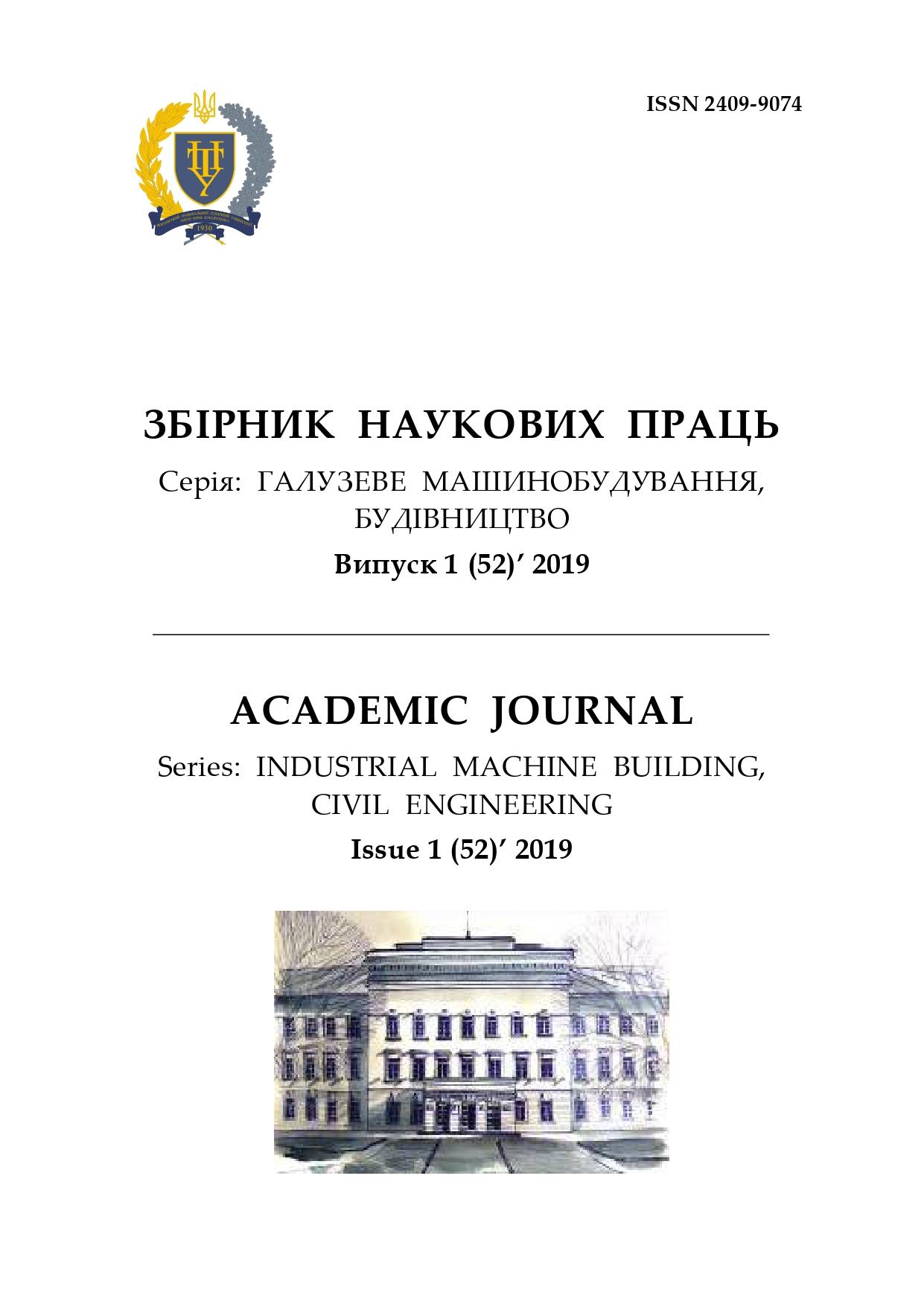Особливості аварій у будівництві
Анотація
Розглянуто проблеми аварій будівель і споруд, відмов конструкцій; зазначено про недосконалості ведення статисти-
ки аварій та методології обробки даних про них. Проаналізовано характерні особливості обробки статистичних
даних та результатів центрів експертиз, які було опубліковано вченими різних країм за останні роки.
Особлива увага звертається на детальний опис і аналіз наймасштабніших аварій у будівництві за минулі роки.
Досліджено найбільш розповсюджені випадки руйнування будівель та споруд. Проаналізовано приклади аварій бу-
дівель та споруд під час реконструкції, під час будівництва об’єктів та по причині великого віку об’єкту.
Визначено найбільш імовірні прогнози можливої аварії (наприклад, пошкодження, вихід із ладу, руйнування будин-
ку, будівлі, споруди, лінійного об’єкту інженерно-транспортної інфраструктури або їх частин), що сталася з техно-
генних або природних причин для підрахунку можливих матеріальних збитків i (або) соціальних втрат від відмови
об’єкту. Виявлено та обґрунтовано необхідність класифікації аварій у будівництві залежно від етапу зведення будів-
лі. Розкрито підхід до опису аварії, виходячи з її вірогідності. Наведено приклади ситуацій, у яких аварія являлася
вірогідною. Предтавлено дані досліджень, отримані за останні десять років, що охоплюють будівельні інциденти по
всьому світу. Класифікація аварій приведена за типом їх виникнення; матеріал систематизовано та представлено у
вигляді таблиці. Дані таблиці вміщують у собі опис аварії, її причини, місце та час виникнення. На основі проведе-
ного дослідження запропоновано класифікацію за ймовірністю виникнення аварій будівель та споруд, для неї пред-
ставлений детальний опис. Класифікацію створено із метою можливості моделювання різних типів вірогідних ава-
рій, які можуть виникнути на об’єкті, для їх подальшого уникнення, а також з метою подальшого викоритання при
проектуванні будівельних об’єктів.
Посилання
of steel structures and methods for their elimination.
Moscow: Stroyizdat.
2. Lashchenko, M.N. (1969). Accidents of metal structures
of buildings and structures. Leningrad: Stroyizdat.
3. Sakhnovsky, M.M. & Titov, A.M. (1969). Lessons from
the accident of steel structures. Kiev: Budivelnik.
4. Shkinev, A.N. (1984). Accidents in construction. Moscow:
Stroyizdat.
5. Perelmuter, A.V. (2000). Selected problems of reliability
and safety of building structures. Kiev: Publishing House of
UkrNIIProektstalkonstruktsiya.
6. Eremin, K.I. (2009). Chronicle of accidents of buildings
and structures that occurred in 2009. Prevention of accidents
of buildings and structures. Retrivered from http://chromeextension.
7. Eremin K.I., Shishkina N.A. (2010). Causes and consequences
of accidents of buildings and structures that occurred
in 2010. Prevention of accidents of buildings and
structures. Retrivered from http://pamag.ru/pazis.
8. Accident statistics «GCE-North». Retrivered from
http://www.gce.ru.
9. DCTU-N B V.1.2-16: 2013. (2013). Visiting the class of
insurance (vdpovdnostalnost) and the category of complexity
about the future. Kiev: Ministry of Ukraine.
10. Gryb, A. (2010). Collapse of the ceilings of an eightstory
building on Ligovsky Prospekt. Accidents in construction.
Retrivered from http://bcrash.ru
11. Accidents of buildings and structures on the territory of
the Russian Federation in 2003. Retrivered from
http://www.ohranatruda.ru
12. When an unfinished building collapses. Retrivered
from http://kgd.ru
13. RBS Ukraine. Retrivered from http://daily.rbc.ua
14. In India, a building collapsed. Retrivered from
http://korrespondent.net
15. In the center of Moscow, a new building collapsed. Retrivered
from http://hronika.info
16. In Surgut, the collapse of a new building. Retrivered
from http://www.ntv.ru
17. In the Urals, during the collapse of an unfinished
house, a worker was seriously injured. Retrivered from
http://vistanews.ru
18. Avariya. Retrivered from https://uk.wikipedia.org
19. The collapse of the building in Tel Aviv: two dead, five
missing. Retrivered from http://9tv.co.il
20. Orlov, G.G. & Korolchenko, A.D. (2016). Loads destroying
building structures as a result of accidental explosions.
Fire and explosion safety, 3.
https://doi.org/10.18322/PVB.2016.25.03.45-56
21. Accidents and catastrophes of buildings and structures.
Retrivered from http://isi.sfu-kras.ru
22. Cases of collapse of buildings abroad in 2011 - 2013.
Retrivered from http://ria.ru/spravka
23. Pichugin, S.F. & Makhinko, A.V. (2012). Snow and ice
loads on building structures. Poltava: ASMI.
24. The largest destruction of buildings in the world. Retrivered
from http://enkibiz.com/articles
25. The collapse of the shopping center "Maxima" in Riga.
Retrivered from https://ru.wikipedia.org
26. The collapse of a bump in Savarі. Retrivered from
https://uk.wikipedia.org
27. Sports and entertainment complex Transvaal Park. Retrivered
from https://ru.wikipedia.org
28. In Brussels, a powerful explosion in a residential
building. Retrivered from https://apostrophe.ua
29. The skyscraper in Dubai burned like a torch. Retrivered
from https://www.gazeta.ru
30. The towers of the "Federation". Retrivered from
http://fedtower.ru
31. Between 2001 & 2015, an average of 7 people died per
day in Collapse of Structures. Retrivered from
https://factly.in
32. Sokolov, V.A. & Udalov, I.V. (2017). Dostovіrna іnformatsіya
about the natural-technogenic geological environment
is the main factor in the reduction of environmental
rizikіv. Newsletter of the Kharkiv National Karazin University,
series «Geology. Geography. Ecology», 206-210.
https://doi.org/10.26565/2410-7360-2017-47-27

This work is licensed under a Creative Commons Attribution-NonCommercial-ShareAlike 4.0 International License.




